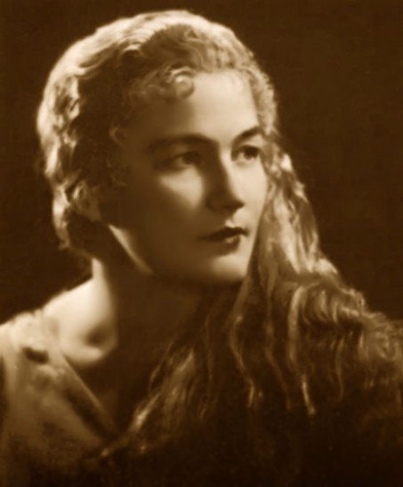Passed away today.
Tag Archives: opera
How to kill an opera company – news from Poland #Opera Kameralna (update)

My personal operatic journey started 20+ years ago with a visit to Warsaw Chamber Opera. A tiny venue, a classical building hidden behind communist era apartment blocs did not promise much but turned out to be a life-changing experience. It was the first time that I listened to an opera at really close quarters – almost at an arm’s length – and the effect was profound. It was totally immersive and with the period costumes, the charming set and perfect attention to detail it transported me to the 18th century. Grey reality of Warsaw disappeared, I was transported to a different time and space – pure magic! The decision to start my voice studies was greatly influenced by that powerful evening.
 The company was the creation of one man – musicologist and oboe player Stefan Sutkowski, who in 1961 in the midst of Communist times traveled to Austria and in an antique bookstore bought a copy of the orchestra score for “La Serva Padrona”. He came back and put together a production which gave birth to the only private theatre in the Communist block. Over the next 50 years his tiny company staged all of Mozart’s operas which were played annually at the Warsaw Mozart Festival; held Rossini, Handel and Monteverdi festivals; discovered and revived ancient and forgotten Polish music; commissioned contemporary operas; and had a marionette stage as well. It is impossible to list all the good things this institution achieved on a shoestring budget. It relied, in its best years, on a combination of city funding and private sponsors. The Mozart Festival in June and July was a real treat in the city where traditionally most theaters close for the summer. It had two orchestras – an ancient music ensemble playing baroque music on old instruments, and the Sinfonietta playing everything else. Both the orchestras and the singers performed also at outside venues and events.
The company was the creation of one man – musicologist and oboe player Stefan Sutkowski, who in 1961 in the midst of Communist times traveled to Austria and in an antique bookstore bought a copy of the orchestra score for “La Serva Padrona”. He came back and put together a production which gave birth to the only private theatre in the Communist block. Over the next 50 years his tiny company staged all of Mozart’s operas which were played annually at the Warsaw Mozart Festival; held Rossini, Handel and Monteverdi festivals; discovered and revived ancient and forgotten Polish music; commissioned contemporary operas; and had a marionette stage as well. It is impossible to list all the good things this institution achieved on a shoestring budget. It relied, in its best years, on a combination of city funding and private sponsors. The Mozart Festival in June and July was a real treat in the city where traditionally most theaters close for the summer. It had two orchestras – an ancient music ensemble playing baroque music on old instruments, and the Sinfonietta playing everything else. Both the orchestras and the singers performed also at outside venues and events.
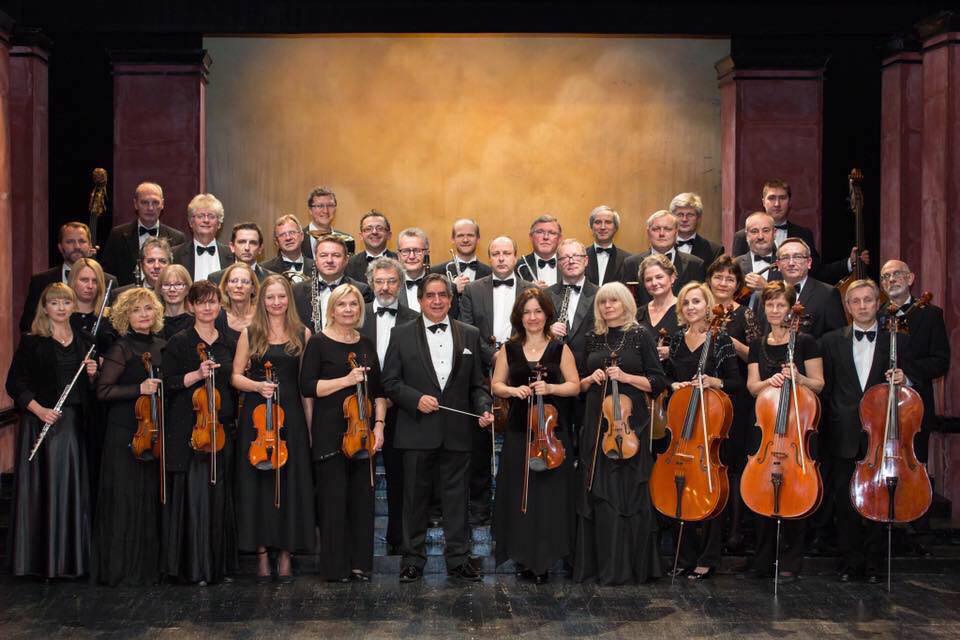
Because of the small size home venue (160 seats), few international tours, and the low profile that director Sutkowski favored, the Warsaw Chamber Opera was in many ways Poland’s secret gem. It did not have the fame of Salzburg or the big names on its billboards, but it had high musical and artistic standards. It was a perfect training ground for young singers and a home for renowned singers like Olga Pasichnyk. Many people got hooked after just one visit, as I did, and ended up going to every new show and revisiting the old ones as they were revived.

If it ain’t broke, don’t fix it. The Chamber Opera functioned well under two different regimes and for decades until someone decided that it had it too good. Four years ago city authorities carried out an audit of WCO and decided the whole thing was “wasteful” and even accused Sutkowski of “criminal” corruption. Storage of old sets and costumes, singers and conductors on payroll, too many musicians… City funding for WCO was cut by twenty five percent, forcing layoffs and closure of WCO’s many activities. It could no longer afford new productions. Director Sutkowski was forced to retire. The new director tried to expand the audience by doing open air events and addressing the financial restraints any way he could; but it was not enough. The Warsaw county regional government decided it could no longer afford WCP with its extravagant musicians’ pay of $459 per month. And so, this month it is disbanding the main orchestra, giving notices to all the conductors and the singers.

To give a fuller context to this catastrophe, it is worth pointing out that public funding for art institutions is a tradition of many Eastern European countries. The whole region emerged from World War 2 and Communism with its old elites decimated and impoverished. Unfortunately, the new business elites are not much interested in supporting the arts. Poland is a place where music culture is high-quality but is not widely distributed through the country – unlike Germany, for example, where every town, even a small one, seems to support their own symphony or performance venue. In Poland many professional musicians, trained over 18 years in specialized schools, cannot find employment in Poland and end up emigrating to Western Europe. The Warsaw Chamber Opera was one of the last institutions in Warsaw that offered steady, albeit very basic employment to musicians, singers and instrumentalists.
In the past four years WCO was receiving a city grant comparable to the budget of a repertory theatre – which usually does not have a live orchestra, a puppet theatre, a community outreach program and the ability to conduct scholarly research. It was 1/5 of the budget of the National Opera. After the cuts in 2012, the opera’s finances never recovered. So now the only “solution” is to let go of the people, and make project-style productions with contract musicians. Will the musicians still be available? If there are no jobs for them in Poland’s capital city many might leave Poland or even leave the profession. Will it be any more efficient? It seems that with 150 musicians laid off this ensemble will be gone.
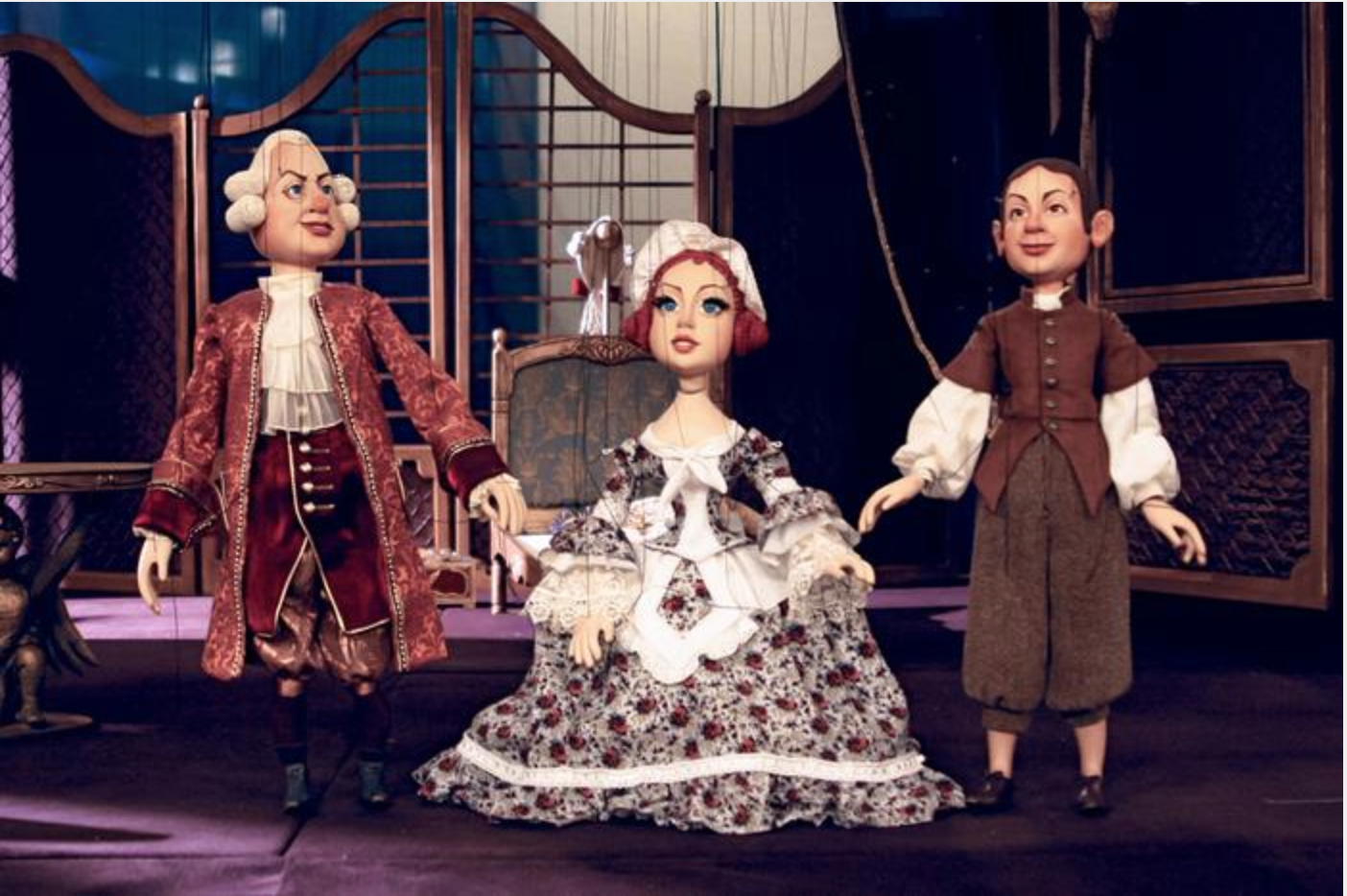
The new acting director who set it all in motion with the support of the regional officials thinks she “will make WCP great again”. Well, great it already was. Ironically, the acting director Alicja Węgorzewska-Whiskerd is a singer herself.
It is painful to see how shortsightedness and private interests disguised as “sound management” can lead to the destruction of a beautiful institution over half a century old. This is not just a Polish problem. War on the Arts also seems to be the theme of threatened administration policies here in America, where the National Endowment of the Arts may be eliminated. What is there to do? Can art fight back? Will we be saved by protests, petitions? I don’t see good prospects on the long run. For Warsaw Chamber Opera – I hope people who were touched by the magic of this place will always remember it and find enough strength to carry on its legacy.
Updated (June 3rd 2017): Stefan Sutkowski died on April 22nd 2017, the day his musicians were handed notices. Orchestras from all over Poland, including the renowned Warsaw Philharmonic are joining forces to protest the situation in solidarity with the Warsaw Sinfornietta. Who will play at this year’s Mozart Festival? Stay tuned.

Power Posture for Singers – Men
I was going to continue reviewing Leyerle’s book but cannot pass the opportunity to say some more about the issue of posture. What is the perfect posture for singing? These days singers performing live on stage assume all sorts of positions, standing, lying down, dancing, even hanging down suspended from a bar, whatever the dramatic situation requires.

However, in recital or auditions little acting is encouraged. I would not go as far as saying there is one “correct” position to deliver an aria or a song, but there are some that work better than others. Unfortunately, those are not the positions that you can find by googling “perfect posture”.
What you find instead are the positions of a character that goes to a doctor’s office and is asked to stand straight.

Is any of it really useful? In my opinion it’s not. So is there a better way? Of course. Just learn from the masters. Let’s take a posture class from Placido Domingo.
This is what he does:

This is a characteristic posture of a male lead in an opera. Some people find it old fashioned but it is still used by singers to deliver challenging arias. As you can see it consists of leaning forward on your “stronger” leg, slightly bent. Does he stand “straight”? Does he stand tall, “as if a suspended on a string from the crown of his head”? Certainly not!

But he is well balanced, grounded and expressive.
Let’s make his position into a diagram.

Let’s remove the photo:

Let’s simplify it still further and make it into a stick figure:
Now the diagram doesn’t show the arms, but gives you an idea how the singer holds himself, how he supports his body. The front leg carries most of the weight and is flexible. I left off the arms as they are used more for expression than balance.
So this is it, this is how Placido stands.
Well, not just him. Look at Mick Jagger!
So the slightly forward leaning stance seems to be working for all kinds of singers.

Their e is a reason for it. It makes singing easier. It takes care of itself, once established you don’t have to think about it.
Because of that it can be especially helpful for beginners. Once you can vocalize well in “Placido’s” position, you can adjust it to the more elegant, modern recital pose.

It is harder to maintain, but doable. At the end of the day a great singer can sing in any position.
So, look around YouTube and find some other singing masters. Look for live recitals and shows where camera captures the whole silhouette, from the head to the feet. Turn off the sound and just observe how they move.
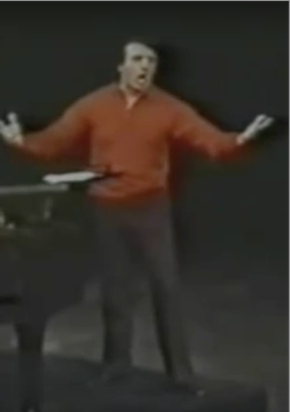

Hope this helps – if you don’t trust me, trust Placido and Mick!
Next time – best singing posture for women. Stay tuned.
Photos: Anthony Ross Costanzo in Partenope, SF Opera, Huffington Post
Mick Jagger in concert with Taylor Swift , Nashville, Getty Images
Tenor Hak Soo Kim, Sarasota Opera 2012 sarasotaopera.blogspot.com
Russell Thomas as Pollione in Norma, SF Opera 2015, KQED broadcast April 2016
Videos:
Placido Domingo with Luciano Pavarotti at the MET in La Boheme (Domingo singing the baritone part of Marcello)
Jonas Kaufman German Arias recital in Munich (Munchner Rundfunkorchester)
Franco Corelli in recital, Hamburg 1971
Doodling: Anna Samborska
Books on Singing – Leyerle
Can you learn singing from a book? Early in my studies I read quite a bit on vocal technique and I became convinced that you could not. Books can accompany your training when you have a real teacher that can always get you back on track. I still believe this to be true.
However, recently I got curious about literature on voice, since the times are changing and new approaches and methods arise. It is never a waste of time to expand your vocal bag of tools!
I went and checked out the shelves at San Francisco Public Library.
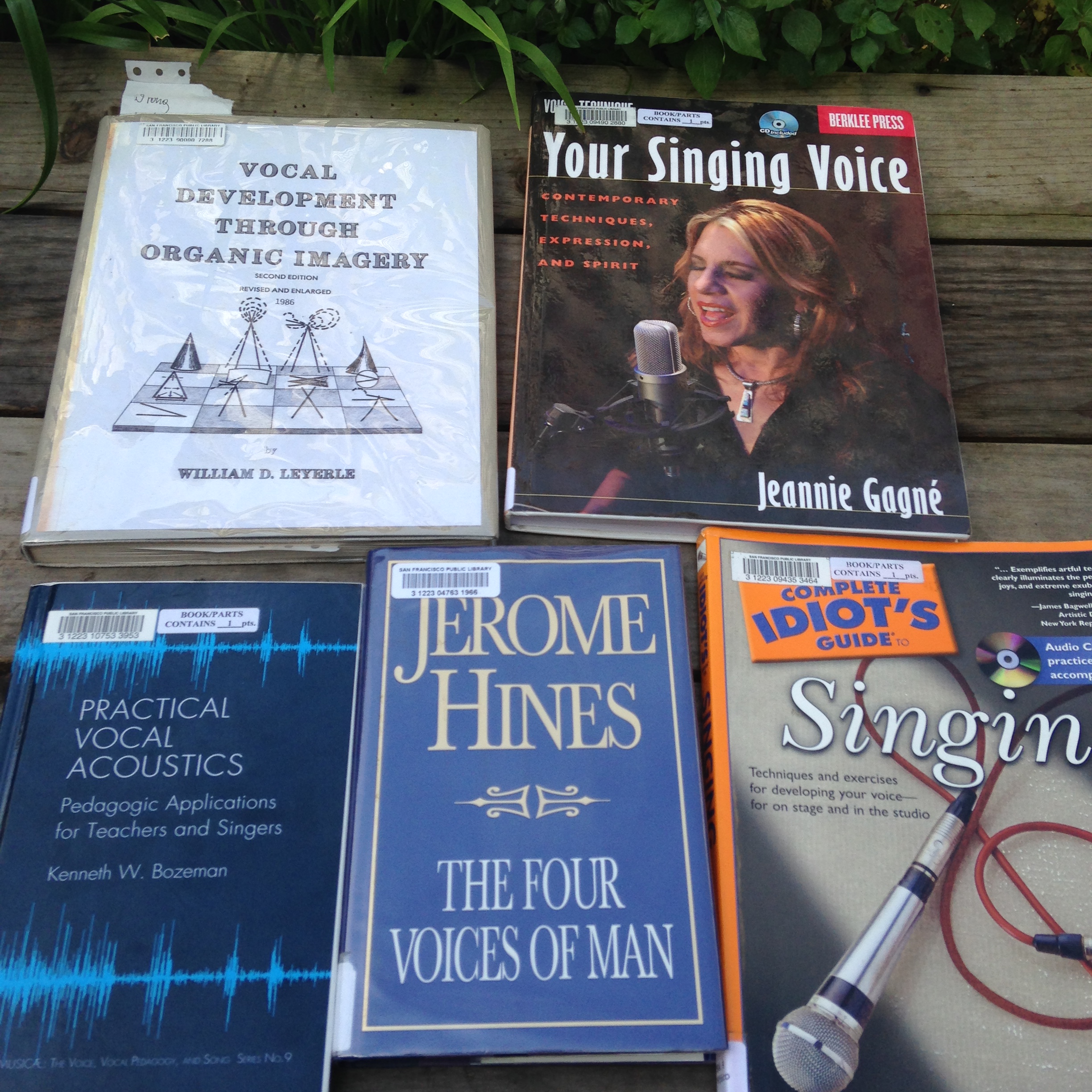
I started with the oldest one, Vocal Development through Organic Imagery by William D. Leyerle. It grabbed my attention since I also use “organic imagery” in my own method, although I call it visualization.
I both hate and love this book.
I hate it because on page 2 it has one of the most harmful pieces of misinformation. After discovering Esther Gokhale’s method and her insight into natural posture I just cannot stomach seeing images of anatomically wrong “flat back” being taught as useful for singers. The same piece of advice I got during my voice lessons at the Royal Scottish Academy of Music and Drama. We had to assume the “supine position” flattening the small of the back on the floor, which made the pelvis go into posterior tilt. It looks ugly, it is uncomfortable and it makes singing harder. How did people come up with this idea and held on to it for so long, since I still see this diagram in countless versions in books and all over the internet?

I cannot say that posture a. is any better, both are totally artificial.
Look at the real singers, how they stand, and try to fit a wall to them!

So, a lot to think about at just page two. Luckily, the rest of the book is much better and some diagrams and concepts are useful. I can imagine someone studying with this script and getting more clarity on resonance and registers. For me the most revolutionary info was about the “middle passaggio”. “Passaggio” is the transition point between lower and higher parts of the voice, a few notes which can be difficult. I knew about the “break” around E and F (top of the staff) and also about the upper limit of the chest voice around E (first line of the staff). But Leyerle talks also about another transition, around C:
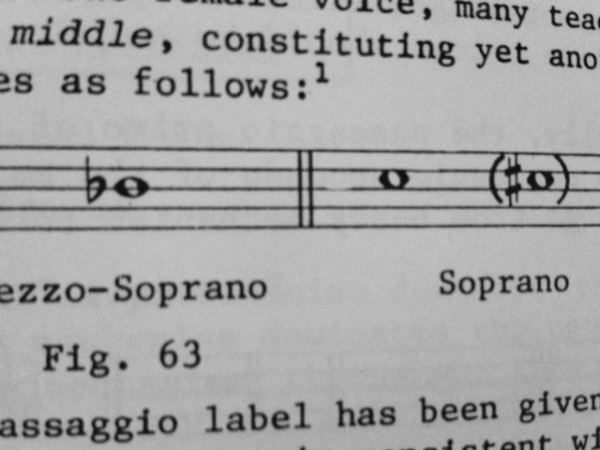
For years I had trouble navigating this spot, even while my higher notes soared with complete ease. Now I know why.
Of course knowing about problem spots doesn’t necessarily help to overcome them. On the daily basis I chose – and this is a legitimate approach according to Leyerle – to just ignore the registers and think of one, smooth quality of tone across the whole vocal range. When you believe in it, hear other singers do it just fine, you can do it too.
The most unusual think about this book are the “funny pictures”.
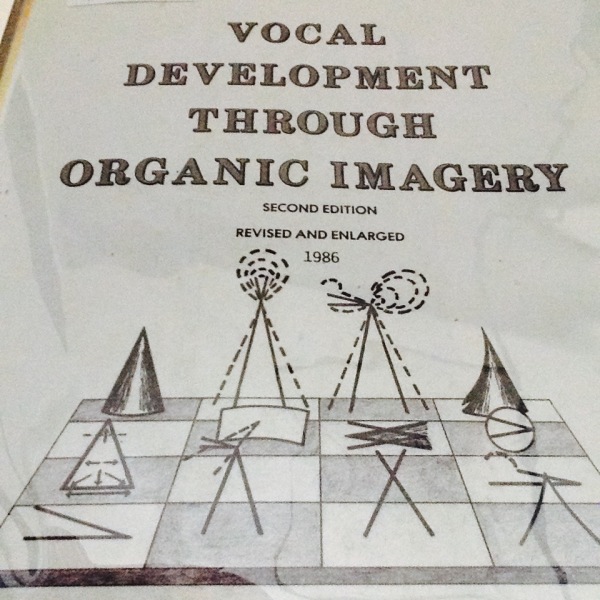
They look like secret symbols or as cartoon characters from an avant-garde animation. They say “don’t judge the book by its cover” but in this case you could teach the whole Leyerle method from the cover of his work. I can see how these can make people find their sound and look for the right sensations in unexpected places, sometimes seemingly outside the body. They are in a way more practical that the usual cross-sections of the head and throat. I like how the author uses the term “focus” instead of placement. All these pointy triangles are directing the attention of the singer to the “focal” spot, as if behind the neck. Such focus achieves two goals: 1) the singer imaging the voice coming from outside the body does not tense the body 2) stops the urge to “project” which for most people means the attempt to push the air outwards.
Another good point is Leyerle’s take on “raising the soft palate” – another opportunity for students to get stuck for years trying to lift something up their throats. For him this is rather the expansion into the back of the throat, a much better image and direction of energy.
I have a bone to pick with him as far as his understanding of “support”. I feel that his images are better than his words. He speaks of breath support but means “back support” – visualized in the shape of a dark cone – going around the back of the rib cage, around the diaphragm. This is ok. Any teacher that does not tell the students to “push with their diaphragm” has my respect!
TBCnd
The Haunted Manor in San Francisco
Recent performance at my daughter’s school – San Francisco teenagers love Polish opera!
Concert in Bernal Heights on Saturday
Last week Bernal Opera sang in Mendocino County, this weekend we will be performing – and entertaining – closer to home, at the Infinite Koncepts Gallery, 3844 Mission St, San Francisco. Program includes arias by Catalani, Puccini, Massenet, Boito and art songs by Karłowicz, Różycki, Dell’Acqua. Starting at 8 PM, Nov. 22nd, 20 bucks a ticket with some delicious food and wine included. If interested, call Alejandro at 415 595 8054 – see you there!
Bernal Opera Gala came and went
I think we had a full house on Saturday – opera singing for many lovely, interesting people plus wine, snacks and cake. Of all the pieces performed the most commented one was my beloved “Aria with Chimes” from The Haunted Manor by Moniuszko. If I can get Rob from England to orchestrate more material my dream of staging this wonderful opera in San Francisco will come true! Apart from that, the recipe for a good evening is: two Verdis, three Puccinis, Handel, Rameau, Mozart and Wagner. Oh, and yes, Spohr. Kudos to Justyna for joining in and sight reading some of it on the fly.
As a true Pole I am not able to say at this point what the rest of the season will look like, things will happen as they happen. If I can get Our Producer to open the house on a regular basis, let’s say once a month, we will plan the program in a more detailed way so that pieces don’t get repeated. I liked that some guests found out about the concert an hour in advance, confirmed, came in and had a good time. That’s pretty much how I go to shows – sometime during the day I realize I have a free evening, look around, see something on and try for it.
I am also considering creating a separate Bay Area Classical House Concert Meetup group for promoting our events. It seems daunting to starts something like that from scratch, since through the established groups it is easy to reach many people at once. On the other hand it would put out a clearer idea what kind of music to expect. So watch out for it!
Thanks to those who attended and see you again!
Anna Russell operatic comedienne
I went to Scrap – a kind of organized junk yard for artists – and found a treasure. Anna Russell’s LP from 1951! Played fine on our turntable. It was so special playing vinyl – almost like having a living thing in the house. In her hoity-toity voice Russell gives “advice for song selections for concert singers” and she is pretty much spot on. If you don’t have pitch, sing contemporary music, no one will notice! If you have bottom and top, but no middle, go for operetta. If can’t sing high notes go for lieder. If things still don’t work out choose “the clear white or Nymphs and Shepherds” style (British). Superb parody of a beginner’s voice down to the little nervous trembling.
Bottom line – anyone can sing a concert!
In another piece, not on my record, she gives advice on an actual operatic career. Sounds so true you wonder why people are laughing:
The pieces she performed in the show she composed herself. A truly talented and creative lady!
The Zen of Opera
“The heart of Zen is the practice of zazen — seated, silent meditation — which is based predominantly on bringing your attention to the present moment (often via concentrating on your breath) and then doing your best to keep it there.”
Same with bel canto singing (except it is not silent) (and not necessarily seated).
NY Times in article on Peter Mattheissen’s Homegoing
Bad voice day and Viorica Ursuleac
Had a bad voice day when I needed to produce a recording of just a few bars for an animation. Urrgh… Must have driven the neighbors crazy. But it does happen that things don’t start working well until hours of warm-up, especially if you do something new. In the meantime you start wondering if it is the beginning of the end… Because the trained voice should always be there, right? In those moments I think about Viorica Ursuelac.
She was Richard Strauss favorite soprano, and did heavy duty repertoire like Wagner. She had an easy top and good acting skills. But apparently this was not a voice of natural beauty or ease and it took her hours before a performance to get it right. But she did it right and made a living from it.
Have to ask my teacher how to pronounce her name. At our last lesson I had a “good voice day” although we started at 9 am. Go figure..
.















